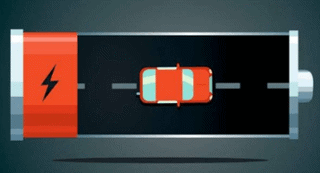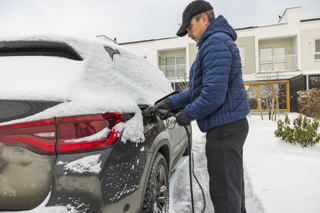Electric vehicles (EVs) are proving to be a third more efficient than in the coldest months, according to new data from EV payment specialist Mina.
Analysis of more than 350,000 charging events, using over 8 million kWh of electricity, from May 2022 to April 2023, show that late spring, summer and early autumn are the best months for EV batteries.
However, Mina notes that the heatwave in late July and August last year saw a spike in consumption as air con was turned up to full blast.
“Our data, recorded by thousands of electric vehicles, proves for the first time what many anecdotal reports had suggested, EVs operate far better in warm weather,” said Ashley Tate, Mina’s CEO.
Through winter, drivers were still averaging about the same amount of charge per session but, to do the same amount of work and mileage, needed an extra plug-in a week compared to September and October to account for reduced battery efficiency and other potential drains on energy such as heating the cabin.
Tate said: “One of the big questions asked about EVs is: how hard are they hit by winter? Well, now we know for sure. There are many factors involved of course, including temperature, routing, vehicle technology and driving style, but for the first time our data is able to show just what the effect is across thousands of vehicles
“By looking at consumption for each week and applying an average domestic tariff for the period of 30p per kWh, we could then show the cost of this for a typical driver. But of course, the cost could be far higher or lower depending on individual circumstances.
“If a driver has an EV specific tariff and charges exclusively at home at off-peak, the cost could be a third of that quoted, at only around £2.50 a week more. Conversely, if they only charge in public, our data shows it could at least double.”
| Month | Average weekly consumption (kWh) | Charges per week | Increase/decrease in consumption compared to May 22 | Indicative extra weekly spend (30p per kWh) compared to May 22 |
| May 22 | 81.6 | 3.7 | - | £24.48 |
| June 22 | 76.6 | 3.8 | -6.1% | -£1.50 |
| July 22 | 77.7 | 3.7 | -4.8% | +£1.17 |
| August 22 | 87.6 | 4.0 | +7.4% | +£1.80 |
| September 22 | 79.8 | 3.6 | -2.2% | -54p |
| October 22 | 78.9 | 3.6 | -3.3% | -81p |
| November 22 | 91.7 | 3.8 | +12.3% | +£3.03 |
| December 22 | 104.9 | 4.6 | +28.5% | +£6.99 |
| January 23 | 107.5 | 4.7 | +31.7% | +£7.77 |
| February 23 | 106.8 | 4.6 | +30.8% | +£7.56 |
| March 23 | 98.6 | 3.9 | +20.8% | +£5.10 |
| April 23 | 87.7 | 3.5 | +7.5% | +£1.83 |
Tate explains that it is important to put it into context and remember that the extra winter consumption is only equivalent to two extra tanks of petrol or diesel and that ICE vehicle efficiency can also be hit during winter months as well.
“With electric you have a much wider range of options,” he said. “Because we track hundreds of thousands of home and public charges and their cost, our data shows the cheapest tariffs are only around 10p per kWh at home and 30p per kWh in public.
“So if a driver wants to reduce costs, whatever the season, they need to ensure they are on the lowest possible home tariff, and search out the best value public chargers.”























Login to comment
Comments
No comments have been made yet.